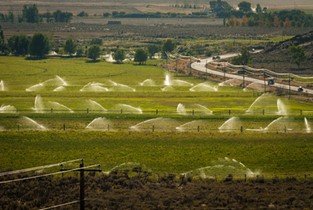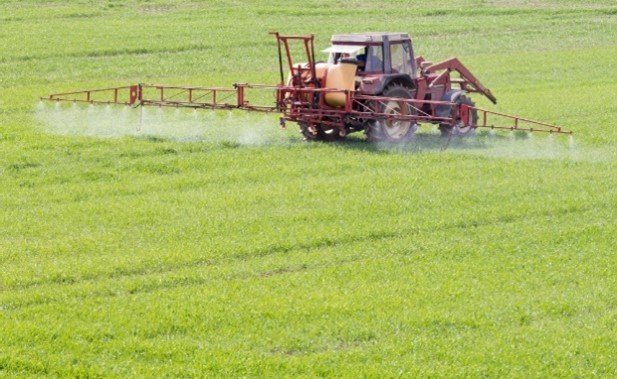EPA Researchers Develop Method for Studying Agricultural Nutrient Pollution in the Midwest
Published March 19, 2024

Nutrient pollution is one of the most pressing issues currently facing U.S. waterways. Nutrient pollution primarily refers to when nitrogen and phosphorus, two elements that occur naturally, have adverse effects on water if they are overabundant. Excess nutrients are a result of runoff from fertilizers, detergents, wastewater, automobile emissions, and more. When these nutrients exceed natural amounts, it can lead to harmful algal blooms and hypoxia, which threaten aquatic biodiversity, as well as human health and industries like commercial fishing.
Agricultural activities account for a large portion of nitrogen and phosphorus pollution in rural watersheds. Nutrients can be found in runoff from fields where manure and chemical fertilizers are used to increase crop production.
The current approach for limiting nutrient pollution from agricultural activities relies on a set of guidelines known as agricultural conservation/best management practices. These preventative actions protect local water quality while still allowing for productive crop yields. For example, methods like minimizing tillage and placing buffers around farmland may be implemented as measures to protect nearby waterbodies.
Rainfall and subsequent runoff play a primary role in transporting nutrients to waterbodies. Understanding the relationship between runoff and nutrient loads to waterbodies is necessary to achieve water quality goals.
To address nutrient pollution concerns, EPA researcher Dr. Yongping Yuan and former Oak Ridge Institute for Science and Education (ORISE) participant Dr. Brock Kamrath conducted research to learn when, and to what extent, these nutrients enter Midwestern waterbodies. Their paper titled “Streamflow duration curve to explain nutrient export in Midwestern USA watersheds: Implication for water quality achievements” outlines the streamflow duration curve, which was used to categorize daily flows of 14 watersheds into five levels: High Flows, Moist Conditions, Mid-Range Flows, Dry Conditions and Low Flows. The scientists investigated the amounts of nitrate, phosphorus and total suspended sediment transported into watersheds during these flow periods.
By analyzing water samples taken in various flow conditions and comparing them with streamflow data, the researchers found a relationship between flow condition and nutrient export, or in this study, the amount of nutrients that were transported in runoff. The data showed that most pollutants made their way into waterways during higher flow events, which occurred during heavy precipitation periods. As a result, the researchers concluded that nutrient reduction strategies and best management practices would be more effective if they focused on limiting pollutants available for entering the water during high flow periods. Best management practices that can be applied in-field, such as nutrient management, may be a better option than riparian buffers.

Research results may be used by state and federal agencies to emphasize the importance of proper fertilizer application rates and to recommend safe thresholds for nitrogen- and phosphorus-based fertilizers.
“Some believe that applying more fertilizer correlates to higher crop yields and that, in turn, generates more revenue. At a certain point, however, crop yields will plateau, and the excess application of fertilizer will just create pollution,” Yuan said.
Researchers anticipate that climate change may cause more extreme precipitation events in the future, thereby increasing the frequency of heavy flow periods. Research on this issue is useful to combat the potential climate change impacts on nutrient pollution.
“I care about this research and how people utilize our work because I want our research to be put to good use and to make a difference,” Yuan said.
Dr. Yuan presented about nutrient management and pollution at EPA’s Water Research webinar on February 28th, 2024. You can watch a recording of the session here.
Learn More
